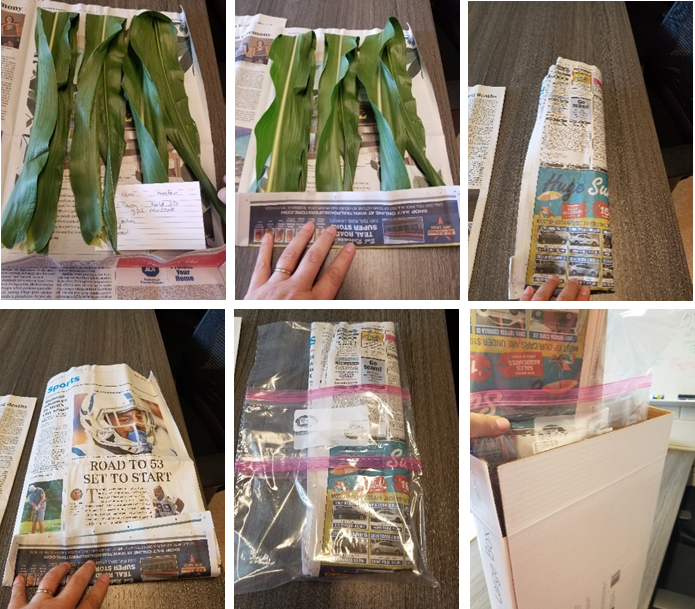The field crop pathology research program is continuing to track the distribution of corn and soybean field diseases in Indiana. We are predominantly interested in the following samples (but always keeping an eye out for others):
Corn: tar spot, southern corn rust, and Curvularia leaf spot
Soybean: red crown rot
In order for an official designation of the field crop disease in a county for tar spot or southern corn rust – myself or the Purdue Plant Pest Diagnostic Lab needs a physical sample. Therefore, we are asking for your help.
Ideally, the Purdue Plant Pest Diagnostic lab would like to receive fresh samples as soon as possible, but I know at this time of the year you may be scouting various field and on the road long hours. Therefore, to encourage you to send samples we are going to give some pointers on how you can collect corn leaf samples and ship them weekly. We do not want them to sit over the weekend so we suggest you ship samples Monday through Wednesday.
How to collect disease leaf samples:
Items to have on hand in your truck or car: cooler with ice pack, gallon plastic bags, marker, notebook paper, and newspaper.
- When scouting a field and you identify a potential sample, please try to grab 4-6 leaves from that field that are exhibiting the symptoms.
- Take a quick image of the diseased leaf to document (most images will also give you a GPS location if turned on)
- Document field location (address, county and GPS location), in addition if possible hybrid/variety, other management practices and or field comments. Fill out a sample submission form https://ag.purdue.edu/department/btny/ppdl/submit-samples/ppdl-1-w-20241.pdf
- If you have multiple samples please try to include as much information as possible to help us distinguish between samples. Label each bag with the field ID and other pertinent information.
- Either fold or wrap the corn leaves flat in a piece of newspaper (this will keep the sample from molding especially if waiting to send for a few days).
- Once wrapped in the newspaper you can place in a plastic bag. It is possible to layer leaves from different fields into on bag. Please note this on the sample bag if it does contain multiple locations. (See images below).
- These samples then can be stored in a cool place (cooler with ice packs) or refrigerator until shipped.
- Make sure to include your contact information in case we have further questions about the sample.
- Mailing samples: The PPDL is not open on the weekend. Ship early in the week (Monday-Wednesday) using a next day deliver option to make sure you sample gets to us before the For Thursday shipments DO NOT use USPS overnight delivery. Your package may arrive at Purdue’s central receiving dock by Friday but will not get to our lab by close of business on Friday. Instead use only UPS or FedEx if shipping on Thursday.
Ship sample to: Plant and Pest Diagnostic Laboratory
LSPS-Room 116, Purdue University
915 Mitch Daniels Blvd.
West Lafayette, Indiana 47907-2054



